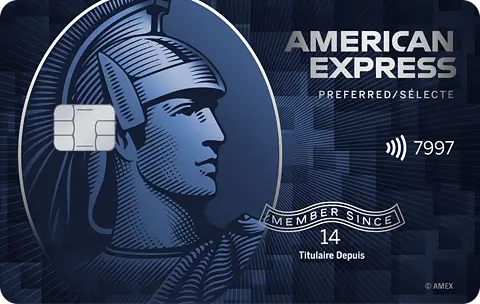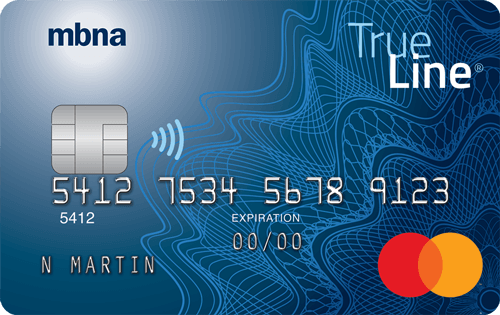What happens if you don’t use your credit card?

Created By
Credit Canada
Learn the pros and cons of having a dormant credit card and what to do when your credit card’s introductory benefits expire.
Advertisement

Created By
Credit Canada
Learn the pros and cons of having a dormant credit card and what to do when your credit card’s introductory benefits expire.

I would like to see an article on what to do when the credit card becomes less useful, such as when the introductory benefits wear off. Is it best to let it go dormant? What about fees? Will it affect my credit rating? How many cards is too many?
—Lisa
Thank you for your questions, Lisa. When the introductory perks of your credit card come to an end, it’s common to wonder if the card is still worth keeping. In this article, we’ll look at the pros and cons of letting the card sit unused, as well as how to understand potential fees and how it may impact your credit score.
When promo offers for a credit card in Canada expire, cardholders often see a shift in the terms and conditions of their account.
Typically, when you get a new credit card, the benefits might include promotional interest rates, bonus rewards points or cash-back offers for spending a certain amount in the first few months.
When the introductory period ends, the credit card reverts to its standard terms. This means the interest rate will likely increase to the regular annual percentage rate (APR), which could be significantly higher than the introductory rate you had before. In addition, the rewards program might change, offering fewer points or different redemption options.
Before the introductory benefits end, it’s important to check your credit card’s updated terms and conditions. The terms can often be found on your card provider’s website or by conducting an online search. They are mailed with the card, too, so check to see if you have this document filed away in a folder or junk drawer. It will help you understand the new costs and changes in rewards so you can adjust your spending habits and manage interest charges effectively.
If you’re thinking about not using your credit card after the introductory period of welcome-offer perks ends, there are some pros and cons to consider. Before making a decision, it’s important to understand how letting a credit card go dormant could impact your credit score and overall financial health in the long term.
It’s important to weigh these risks and check with your issuer about its policies before deciding to let a card go dormant.
You might be surprised to know that dormant accounts have fees. In Canada, credit card companies often charge an annual fee, whether or not the card is active. This fee can range anywhere from about $7 for a basic card to $700 for a premium one. Some issuers may also charge an inactivity fee if the card has been dormant for several months. These fees usually range between $25 and $50.
Carefully read the terms and conditions of your credit card so you know what charges to expect. Since fees can vary between different credit card issuers, it’s important to be aware of the specifics for your card. Regularly checking your account can help you spot any unexpected fees early.
If you find that you no longer need the credit, review any potential closure fees before deciding to cancel the card, too. Instead, you could look into downgrading the card, transferring balances, or using the card at least once a year for a small purchase to keep the account active.

Join and get up to $1,400 in value including a first year annual fee rebate.

Earn 4% cash back on groceries and gas. Plus get a flat 2% on all other everyday purchases.

An ideal option for cardholders looking to manage debt, the card’s low 12.99% APR is almost half the conventional interest rate found on most cards.
MoneySense is an award-winning magazine, helping Canadians navigate money matters since 1999. Our editorial team of trained journalists works closely with leading personal finance experts in Canada. To help you find the best financial products, we compare the offerings from over 12 major institutions, including banks, credit unions and card issuers. Learn more about our advertising and trusted partners.
Letting a credit card go dormant can impact your credit score in a few ways. As noted above as a con, if you don’t use a card for a long time, your credit issuer might close the account, which reduces your total available credit limit. For example, when an account closes or is canceled, and your total credit limit drops from $10,000 to $8,000, your spending remains at $2,000, your utilization ratio rises from 20% to 25%. A higher ratio can negatively affect your credit score because it suggests you’re using more of your available credit.
Having a mix of different credit types—such as credit cards, student loans, mortgages and car loans—helps maintain a healthy credit score. If a card is closed, you lose some of this diversity, which can also impact your score.
Consistent on-time payments are crucial for maintaining good credit. Even if a card is dormant, missing payments can damage your score. To avoid this, pay more than the minimum payments on your credit cards and make all payments on time, every time.
It is important to review your credit report and score at least once a year to make sure there are no errors. You can obtain your credit report and score through Canada’s two credit bureaus, Equifax and TransUnion, a third-party service, or your bank’s website or mobile app. Even without any errors, regularly checking your report can help you better understand how your financial habits can affect your score and helps you see ways to improve it and manage debt better.
If you’re worried about letting your credit card go dormant, there are a few alternatives. Consider transferring balances from other credit cards or look at downgrading and switching to a no-fee version of the same card. Both of these options keep your account open and your credit utilization ratio low.
You can also keep the card active by using it occasionally for small purchases, setting up a small recurring charge on it, or making it your go-to card for a regular expense, like buying gas. This helps keep your account in good standing without much hassle.
There isn’t a set rule for how many credit cards Canadians should have in their wallets. The number of credit cards that is right for you depends on what you can afford to spend and pay back on time. Remember, it’s not just about the number of cards you have, but how responsibly you use them.
If you’ve been successfully managing a single credit card without issues and your income and expenses are stable, you’re likely in a good position to take on another card. Having a diverse mix of credit and loans will also boost your credit score. However, if managing the credit card(s) you have is putting a strain on your finances, it might be best to hold off on applying for another until you’re confident that you won’t be at risk of overspending or missing payments.
Lisa, keeping the card open can benefit your credit score by adding to your credit history and improving your credit utilization ratio, though it may come with fees or the risk of account closure. However, letting the card sit unused could lead to indirect effects on your credit score over time. To make the best decision, stay informed about your card’s terms and fees, and consider how each option fits with your overall financial goals.
As professionally certified Credit Counsellors with Credit Canada, we can help you understand your credit and offer personalized advice on how to address debt. If you need support, contact us today to book a free credit-building counselling session.
This is an unpaid article that contains useful and relevant information. It was written by a content partner based on its expertise and edited by MoneySense.
Share this article Share on Facebook Share on Twitter Share on Linkedin Share on Reddit Share on Email
Would these pros and cons apply to basic credit cards with No annual fees.
Please clarify/
Adam